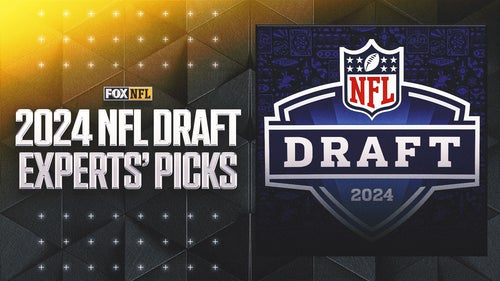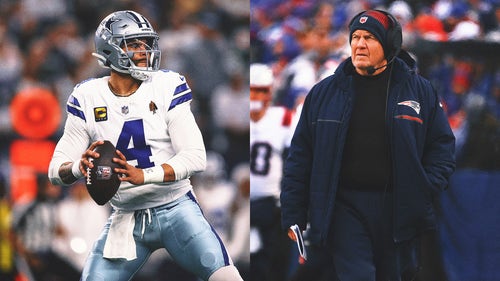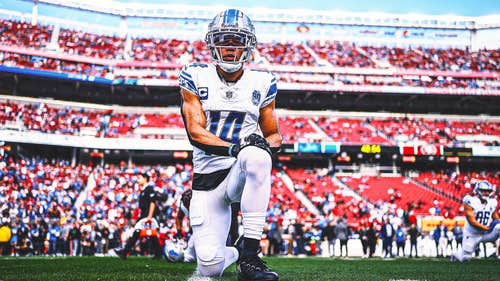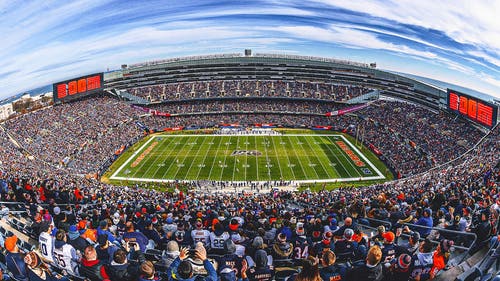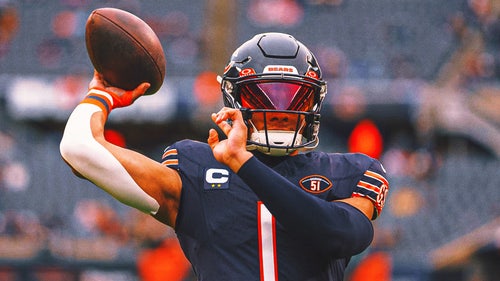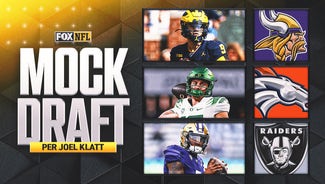
Rushing game back in vogue now
The Green Bay Packers have learned the hard way that running the football is back in style.
No rusher since Eric Dickerson set the NFL single-season record 28 seasons ago gained as many yards in 2012 as Minnesota’s Adrian Peterson. He tallied 409 of those 2,097 yards in two games against the Packers. A third matchup is coming Saturday night in a first-round playoff game between Minnesota and Green Bay at Lambeau Field.
Asked what makes him optimistic Green Bay will prevent Peterson from living up to his “All Day” nickname this time, Packers inside linebacker A.J. Hawk rolled his eyes and smiled before saying, “It’s no secret. He’s amazing.”
“It comes down to old-school, fundamental football,” Hawk told FOXSports.com following Thursday’s practice. “We’ve got to swarm. It truly takes 11 guys to get him down.
“If you watch our last game, a lot of times we had him bottled up behind the line of scrimmage and then, boom, he’s going to find a crease. You can’t ever assume he’s down. You’ve got to get him down on the ground however possible.”
This challenge isn’t exclusive to Peterson.
The conventional wisdom that the NFL had become a “passing league” because of rules changes was challenged in 2012. While the league-wide total of rushes, yards and per-carry average remained almost the same from last season, winning teams relied more on their ground attacks than in recent seasons.
Consider these facts:
The Packers also got into the act with 433 rushes, their highest total in nine seasons. Green Bay averaged a modest 3.9 yards a carry as injuries forced the team to use a running back-by-committee approach. But an emphasis on balance kept defenses from teeing off on the passing game and quarterback Aaron Rodgers, who completed another brilliant season with 39 touchdowns and only eight interceptions.
“Teams have done a good job adjusting to what the Packers do offensively,” Green Bay running back and six-year NFL veteran Ryan Grant told FOXSports.com. “To try and keep us honest, they are playing more for the pass because of the standard we have set there. As an offense, you have to adjust.
“This game is kind of like, ‘You take what they give to you.’”
The Packers recognized that teams were giving them the chance to run by regularly dropping safeties to prevent getting beaten deep by Rodgers. Like some of the NFL’s other pass-heavy offenses facing the same challenge, Green Bay has tried to capitalize on this with more runs. The Packers enjoyed their first five-game stretch (Weeks 12 to 16) with rushing production of 100-plus yards since 2007. They won four of those contests.
“You have to always have the threat of the run,” Packers running backs coach Alex Van Pelt told FOXSports.com. “A team that can sit back with two-high safeties and defend pass all day with the rush just pinning its ears back and chasing all day makes it tough for a quarterback. You have to have the threat of a run to maybe bring an extra guy down in the box. That opens up everything in the pass game.”
Some other reasons the run is vogue once again.
The read-option. One of the wrinkles from college football has found its ways into the pros. After receiving a shotgun snap, the quarterback “reads” how an outside defender (end or linebacker) is playing before deciding whether to hand off or keep the football himself.
“It helps your run game because (defenses) are really in a bind,” said Van Pelt, who was on Tampa Bay’s prior coaching staff when the Buccaneers ran some read-option plays with backup quarterback Josh Johnson. “The guy who’s reading, does he chase the running back or come up-field and chase the quarterback? That guy is usually never right.
“You’re basically pushing your offensive line over one more man so you’re gaining a blocker on the front side of these runs. If you have a quarterback that can do it, it’s scary.”
The Redskins tweaked their West Coast-style offense to accommodate rookie Robert Griffin III, who responded by leading NFL quarterbacks in rushing with 815 yards. The dual threat of Griffin and Morris helped the Redskins finished atop the league with a 169.3-yard average and win their first NFC East title since 1999.
Seattle and San Francisco also have capitalized on the mobility of young quarterbacks Russell Wilson and Colin Kaepernick to reach the postseason. Wilson didn’t run the read-option in college but has proven a quick study. Kaepernick is a natural after playing in a modified “Pistol” shotgun offense at the University of Nevada.
The read-option, though, does expose quarterbacks to injury. Griffin was forced to miss a December start against Cleveland and still hasn’t looked at full speed since his return with a brace on his right knee.
“It’s something that’s so foreign to the NFL,” Hawk said. “When you pay a quarterback $15 million, you usually don’t want him running around taking shots like that. But you’re also seeing a lot of these athletic quarterbacks coming in who can do it. If they can run four or five times in a game, they really can mess you up because you’re also going to have to sit there and work on it in practice.”
Van Pelt expects defensive coaches to spend their offseason seeking ways to counter the read-option in 2013.
“If you’re in the NFC East and playing Washington twice a year, I think you better stop it,” a laughing Van Pelt said. “There will be a lot of time spent going back with the college teams and speaking with guys at that level who see it a lot more often and picking their brains.”
Tackling isn’t what it once was. Covering passes and rushing the quarterback may be easier than bringing down a running back. One of the reasons is the limited amount of contact teams can have in practice, which often trickles down to game days.
As part of the new Collective Bargaining Agreement signed between the NFL and its players union in July 2011, two-a-day padded practices in training camp were outlawed. Teams are restricted to one padded practice a week for the first 11 weeks of the regular season. The hitting rules are even more restricted in the final seven weeks of the season and playoffs.
“We will go through some drills but it’s not the same because you don’t have pads on,” Minnesota head coach Leslie Frazier told Vikings media earlier this week. “You can’t really execute it the way you would if you were doing it live.
“It becomes a mindset, just instilling in the guys the importance of it and getting everybody to run to the ball. But it still comes back to the individual understanding the angles and having a mentality that ‘I’m going to make this tackle. I know how to tackle. I know how to wrap my arms. I know how to bring my feet, get into position.’ You can’t physically get it done in practice, so the mental part really takes over.”
The NFL player lockout in 2011 skewed offenses to pass more. This is what Grant believes happened after four months of offseason programs were lost as the league and NFL Players Association haggled over the CBA. Training camps began almost immediately after a labor agreement was reached.
“We went straight from the lockout so some of the offenses that were already in place got rolling and defenses didn’t have a chance to game-plan against them in the offseason,” Grant said.
The overall quality of running backs beckons for more carries. The eight playoff rushers with 1,000-plus yards feature a combination of established talent like Baltimore’s Ray Rice and Frank Gore and youngsters like Morris and New England’s Stevan Ridley.
And then there’s the back who is on an even higher level.
Peterson finished with more yards individually than 22 NFL teams. No running back in NFL history gained as many yards during an eight-game span (1,313) as Peterson did between Weeks 7 and 14.
Two other caveats make Peterson’s 2012 season even more remarkable.
First, he wasn’t even a year removed from a major knee injury suffered at the end of the 2011 campaign. Peterson also became the focus of opposing defenses with the Vikings fielding an anemic passing attack -- and he still couldn’t be stopped. It was considered a moral victory for Houston in Week 16 when Peterson was held to “only” 86 yards.
“People have no idea as a running back the amount of heart it takes to play the position,” Grant said. “The amount of determination he shows every time he touches the ball is outstanding. It’s one of those things that’s inspiring.
“I’m not a super-fan of a lot of people in this league. But as a back, you tip your hat off to what he does across the board.”
We’ll find out soon enough which running back is taking a bow during the curtain call following Super Bowl XLVII.






































































































































